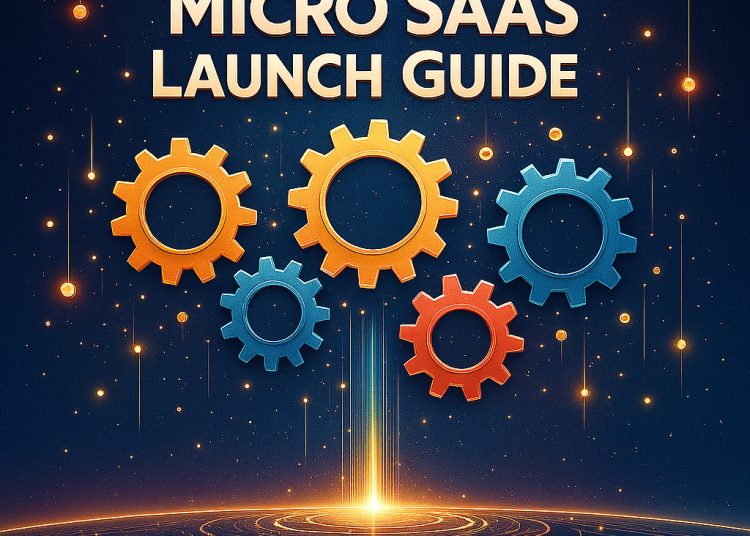Understanding the Microsaas Landscape
In today’s fast-evolving digital economy, microsaas—small-scale software-as-a-service ventures—have emerged as an attractive option for entrepreneurs seeking scalable, niche solutions without the overhead of traditional software enterprises. Unlike larger SaaS platforms, microsaas products typically target specific problems, offering lightweight, focused solutions. This smaller scope allows developers and marketers to lean into agility, easier maintenance, and faster deployment cycles.
One of the most transformative elements accelerating the rise of microsaas businesses is the increasing accessibility of nocode tools. These platforms empower individuals without extensive programming experience to build, test, and launch applications efficiently. Understanding how to leverage this trend is crucial for anyone aiming for swift and sustainable success in the microsaas space.
Why Microsaas is Perfectly Paired with Nocode
Microsaas ventures thrive on minimalism and precision. Given their narrow target audiences, these products do not require complex infrastructures or vast feature sets. This simplicity aligns perfectly with the nocode ecosystem, a world of drag-and-drop builders, prebuilt modules, and automated workflows.
Nocode platforms such as Bubble, Webflow, Airtable, and Zapier provide all the necessary building blocks to design user interfaces, databases, logic, and integrations without writing a single line of code. This democratization removes traditional development bottlenecks and slashes time-to-market, allowing creators to validate ideas and iterate rapidly.
Step-by-Step Microsaas Launch Guide with Nocode Tips
Launching a microsaas effectively demands clear strategy combined with tactical execution. Here’s a detailed roadmap emphasizing exclusive nocode tips to streamline your journey:
1. Identify a Precise Niche Problem
Start by pinpointing a narrowly defined pain point that larger SaaS solutions overlook. The smaller and more specific your niche, the better.
– Use social listening and community forums to understand user frustrations.
– Validate demand through surveys or pre-launch landing pages.
2. Design Your Product with Nocode Simplicity
Use nocode tools to quickly prototype and map your solution.
– Wireframing: Use Figma or Adobe XD for initial designs.
– Building UI/UX: Platforms like Webflow or Bubble allow you to drag-and-drop interactive interfaces.
– Database & Logic: Tools such as Airtable or Bubble’s native database enable you to structure your backend.
– Integrate automation using Zapier or Integromat to connect different tools and streamline workflows without coding.
3. Build a Minimum Viable Product (MVP)
Focus on core features that solve the problem directly.
– Avoid feature bloat; each element should add clear value.
– Nocode enables you to launch your MVP much faster than traditional development—often in weeks, not months.
4. Test with Real Users for Rapid Feedback
Early user feedback is invaluable.
– Use tools like UserTesting or Hotjar integrations to track user behavior and pain points.
– Iterate your product rapidly based on feedback without the traditional deployment hurdles thanks to nocode flexibility.
5. Prepare a Lean Marketing Strategy
Microsaas generally benefits from tight, targeted marketing:
– Use content marketing to reach niche audiences where they spend time.
– Engage in communities (Reddit, Slack groups) and forums.
– Consider simple, automated email sequences for nurturing leads with tools like ConvertKit or Mailchimp.
6. Price Strategically and Flexibly
Because microsaas offerings usually address limited problems, pricing must consider perceived value carefully.
– Offer tiered plans or freemium models to attract different user segments.
– Use nocode billing integrations from Stripe or Paddle to manage payments seamlessly.
Overcoming Common Challenges with Nocode in Microsaas
While nocode tools offer significant advantages, there are challenges to be mindful of:
– Scalability: Some nocode platforms can become restrictive if your user base grows exponentially. Planning with scalability in mind is critical.
– Customization limits: Complex logic or niche workflows might require creative solutions or partial code injections.
– Vendor lock-in: Dependence on a particular nocode provider can pose risks, so choose platforms with export or migration options.
To address these, maintain flexibility by modularizing your application and regularly validating user needs. Most microsaas don’t require expansive code for success in early phases, so balancing speed and long-term feasibility is key.
Final Thoughts: The Power of Microsaas Combined with Nocode
The marriage of microsaas and nocode is reshaping how digital entrepreneurs launch products. It not only lowers the barriers of entry but promotes lean innovation and robust user-centric designs. By strategically leveraging nocode platforms to craft niche, focused software, anyone—from solo founders to small teams—can efficiently create value, validate concepts, and build meaningful revenue streams.
Whether you are an aspiring founder or seeking to expand your SaaS portfolio, deploying these exclusive nocode tips can transform your microsaas vision into a tangible, effortless success story. The future is ripe for those who can blend nimble development with razor-sharp focus—and nocode tools elevate that capability like never before.






































